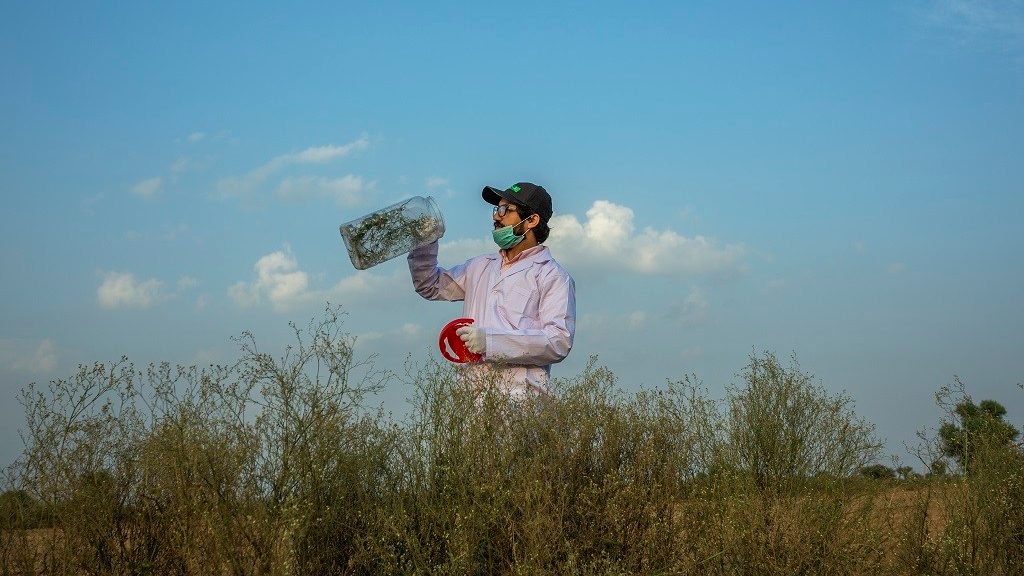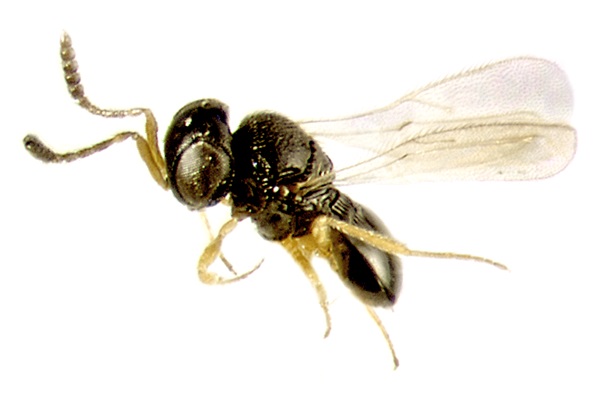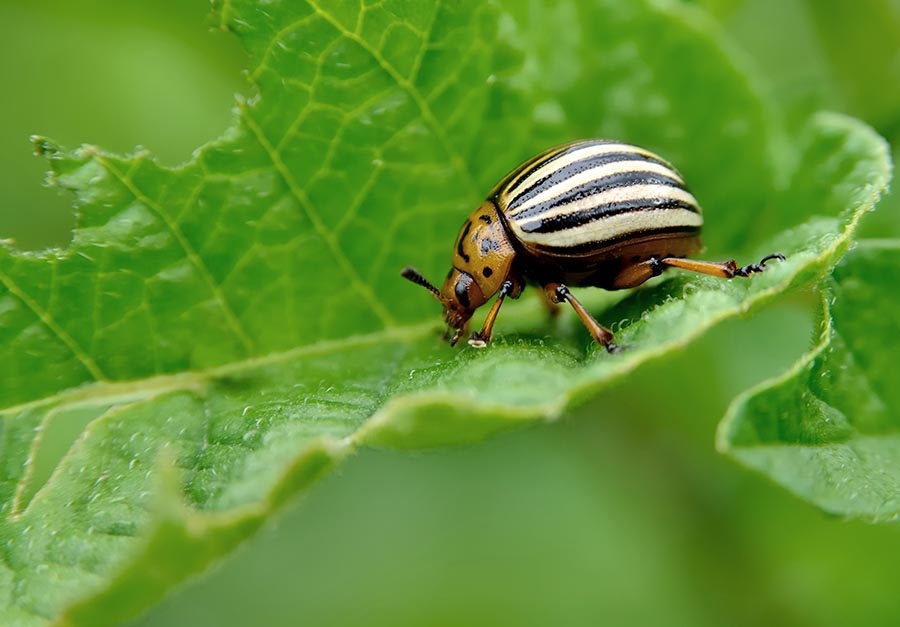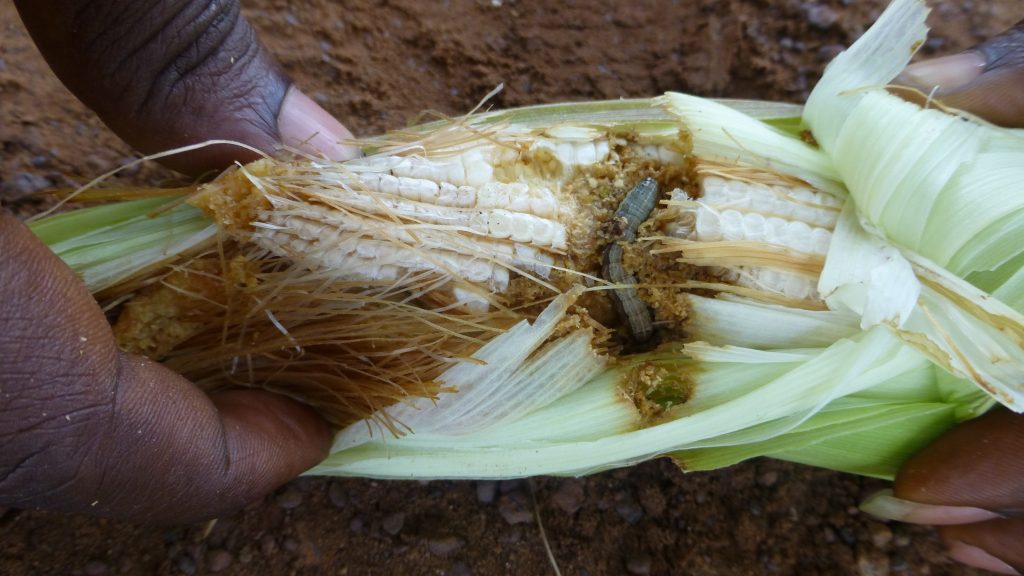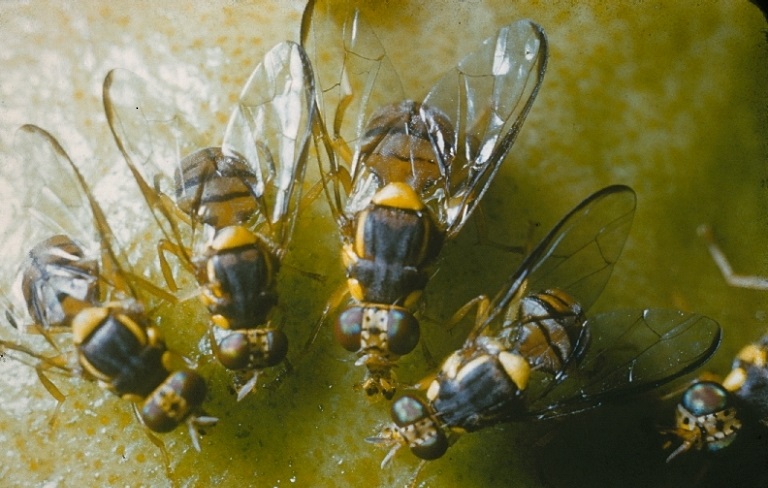CABI’s new quarantine facility creates greater capacity for Parthenium research in Pakistan
CABI has increased its capacity to fight the highly invasive and destructive Parthenium weed by opening a new quarantine facility at its Central and Western Asia (CWA) offices and laboratories in Rawalpindi, Pakistan.
CABI publishes recommendations to fight scourge of parthenium weed in Central West Asia
CABI has published a new evidence note highlighting a list of recommendations to fight the highly-invasive parthenium weed which can have significant impacts on human health, the environment, livestock production and health and crop yields. The report ‘Parthenium: Impacts and coping strategies in Central West Asia’, states that the aggressively-spreading weed, now classified as a ‘superior…
Invasive weed could cut crop yields by 30 per cent
By Nicholas Okeya. Originally published on SciDev.Net. A dangerous invasive alien weed known as field dodder could be a serious menace to agriculture and biodiversity across Sub-Saharan Africa, and reduce crop yields, scientists say.
Scientists confirm first report of egg parasitoid in Africa to fight devastating fall armyworm
A group of scientists have confirmed the first report of an egg parasitoid Telenomus remus in Africa which could prove an important biological weapon in the fight against the devastating fall armyworm (Spodoptera frugiperda) that threatens the food security of more than 200 million people.
New pest risk analysis decision support tool in development from CABI
A Pest Risk Analysis (PRA) allows National Plant Protection Organisations (NPPOs) to assess risks posed by pests or pathways of quarantine concern, and identify options to manage those risks. Recognising that there was a need for support in the completion of PRAs, CABI, under its Action on Invasives programme, has designed and is developing an…
Asia on alert as highly destructive fall armyworm spreads
By Trudy Harris. Originally published on SciDev.Net. Farmers and authorities throughout Asia need to be vigilant against fall armyworm invasions, after confirmation that the fast-moving pest has spread from India to China and now to South-East Asia, agricultural experts say.
Fall Armyworm attack: ‘Eastern India more vulnerable to infestation’
Originally published on DownToEarth Warmer temperatures increase the metabolism and reproductive rates of the pest Fall Armyworm was first reported in July 2018 in Karnataka. Ever since, it has spread to its neighbouring states. Reports are now coming from West Bengal and Bihar as well. The initial damages are widespread as the pest is a…
Biological control against invasive agricultural pest slows deforestation across Southeast Asia
Used as an effective method of controlling invasive species, biological control (or biocontrol) is the term given to the use of living organisms for controlling pests and invasive species. It can provide an effective, environmentally-friendly and cost-efficient way of controlling pest populations, helping to restore crop yields and farmer’s profits. However a recent study, focussing…
Zygogramma bicolorata released at selected sites in Pakistan as biological control of parthenium
Parthenium hysterophorus is a highly destructive weed which has invaded and is widespread in around 48 countries in Africa, Asia, and the South Pacific. In Pakistan the weed is spreading rapidly westwards and southwards across both rural and urban landscapes, affecting native ecology and harming agriculture.
Major invasive pest found for the first time on agricultural land in Europe
Eight oriental fruit flies (Bactrocera dorsalis), considered the world’s worst invasive fruit fly, have been found at two monitoring stations in Italy. Annually, there are several reports of this species being found in infested fruit in France, Switzerland and the UK, and one individual was found in a trap in an Austrian fruit market in…

